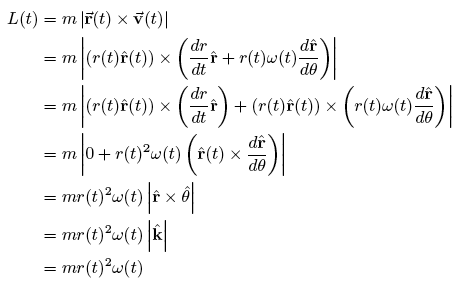Geosphere, he's saying that in 4D, gravity follows an inverse-cube law. The precise ratio would depend on the value of the G (the universal gravitational constant) in 4D.
To see why, imagine the case in 3D. Think of field lines coming out of a point gravitational source. If you draw concentric spheres around the point, you'll notice that the total number of field lines passing through every sphere is the same. However, the surface area of each sphere is proportional to the square of its radius. Thus, the number of field lines per unit surface area is inversely proportional to the square of the radius. Therefore, gravity follows an inverse-square law in 3D.
There is an analogous situation in 4D, except we have concentric glomes. The surface volume of each glome is proportional to the cube of its radius. Follow the reasoning through, and you will see that in 4D, gravity should follow an inverse-cube law.
pat, according to your explanation for why 4D orbits are unstable, it should seem that orbits in any dimension except 3D are unstable. Momentum is proportional to the square of the radius in any dimension (please correct me if I'm wrong), but gravity follows an inverse-square law to balance this only in 3D.
One more question: Why is momentum proportional to the square of the radius? I know that planets closer to the sun (smaller radius) move faster, so wouldn't we expect them to have more momentum, instead of less?
Thanks
Fourth Dimension Calculation?
63 posts
• Page 3 of 3 • 1, 2, 3
jinydu wrote:Why is momentum proportional to the square of the radius? I know that planets closer to the sun (smaller radius) move faster, so wouldn't we expect them to have more momentum, instead of less?
It's in the conversion to a polar coordinate system that the second factor of r comes in. From my first rev on the orbit stuff (and from this website):

The critical balance is one of: <sup>G M</sup>/<sub>L</sub> where G is the universal gravitational constant, M is the mass of the sun, and L is as above: m r<sup>2</sup> ω So, in order to keep the same balance, one has to increase ω (the angular velocity) if one is going to decrease the square of the radius.[/img]
- pat
- Tetronian
- Posts: 563
- Joined: Tue Dec 02, 2003 5:30 pm
- Location: Minneapolis, MN
63 posts
• Page 3 of 3 • 1, 2, 3
Return to Where Should I Post This?
Who is online
Users browsing this forum: No registered users and 7 guests

